- Administrator
- Albums and Singles
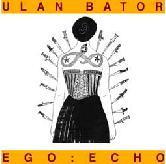 Ulan Bator is a French avante art rock trio who apparently take theirname from the capitol of Mongolia. "Ego : Echo" is their third albumand it was for the most part spontaneously created during 3 weeks ofsessions last summer in Florence, Italy with producer and Young GodRecords head Michael Gira (SWANS, The Angels of Light). Ulan are allabout tight and minimal, tense and repetitive guitar/bass/drum rockgrooves - both noisy and subdued - as musical and (French) vocalpassages become hypnotic head noddin' mantras. Add organ, piano, bow,keys, horn, tape loops, electronic drone, 'la la la' styled backingvocals and Gira's dry, crisp, clean and full production. Comparisonsto Can, Faust (Jean Herve Peron contributes horns to 1 song), the BadSeeds and Gira's own projects is inevitable as everything is sparseyet beautifully melodic and the sound and feel is similar, at the veryleast, in spirit. The 16 minute centerpiece "Let Go Ego" in particularprovides the variety of most everything Ulan Bator do in one song withextensive stretches of drone, somnambulant sonic meandering, heavy rockout and lengthy coda chant. "Ego : Echo" is a dynamic rock record thatresonates with passion and a sense of straightforward urgency. It'sone of a handful of cool musical things lately from France and it fitsright in with the rest of the Young God catalog. Up next from YGR arealbums by Calla and Flux Information Sciences in January and the newAngels of Light album "How I Loved You" in February.
Ulan Bator is a French avante art rock trio who apparently take theirname from the capitol of Mongolia. "Ego : Echo" is their third albumand it was for the most part spontaneously created during 3 weeks ofsessions last summer in Florence, Italy with producer and Young GodRecords head Michael Gira (SWANS, The Angels of Light). Ulan are allabout tight and minimal, tense and repetitive guitar/bass/drum rockgrooves - both noisy and subdued - as musical and (French) vocalpassages become hypnotic head noddin' mantras. Add organ, piano, bow,keys, horn, tape loops, electronic drone, 'la la la' styled backingvocals and Gira's dry, crisp, clean and full production. Comparisonsto Can, Faust (Jean Herve Peron contributes horns to 1 song), the BadSeeds and Gira's own projects is inevitable as everything is sparseyet beautifully melodic and the sound and feel is similar, at the veryleast, in spirit. The 16 minute centerpiece "Let Go Ego" in particularprovides the variety of most everything Ulan Bator do in one song withextensive stretches of drone, somnambulant sonic meandering, heavy rockout and lengthy coda chant. "Ego : Echo" is a dynamic rock record thatresonates with passion and a sense of straightforward urgency. It'sone of a handful of cool musical things lately from France and it fitsright in with the rest of the Young God catalog. Up next from YGR arealbums by Calla and Flux Information Sciences in January and the newAngels of Light album "How I Loved You" in February.samples:
Read More
- Administrator
- Albums and Singles
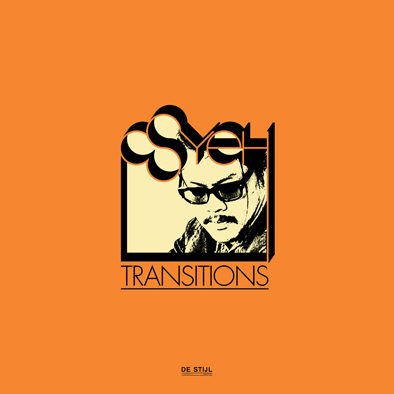 My appreciation of Spencer Yeh has increased in recent years due to his clear disinterest in re-covering familiar and expected territory.  Nowhere is that creative restlessness more conspicuously on display than here, an entire album of charmingly ramshackle left-field pop.  As it turns out, Yeh has been concealing a knack for songwriting all these years, as Transitions is a legitimately excellent and charismatic effort that makes me wish he had been doing this all along.  These are some of the most instantly likable songs that I have heard all year.
My appreciation of Spencer Yeh has increased in recent years due to his clear disinterest in re-covering familiar and expected territory.  Nowhere is that creative restlessness more conspicuously on display than here, an entire album of charmingly ramshackle left-field pop.  As it turns out, Yeh has been concealing a knack for songwriting all these years, as Transitions is a legitimately excellent and charismatic effort that makes me wish he had been doing this all along.  These are some of the most instantly likable songs that I have heard all year.
This, of course, is not Yeh's first foray into "pop," as that honor went to last year's "In the Blink of an Eye" 7" single.  Writing a great album is quite a bit different than recording a cool fluke single though and Yeh does not seem to have taken the challenge lightly...at least not from a craftsmanship angle.  In another sense, Spencer seems to have approached the album extremely lightly, which is exactly the right way to approach a pop album.  Transitions does not feel like any sort of calculated attempt to appeal to a wider audience; rather it feels like Spencer had an enormous amount of fun constructing short punchy songs packed full of meaty bass lines ("Transitions"), kitschy drum machine grooves (pretty much everything), and a host of amusing curve-balls like horns, wah-wah guitar, and crude 8-bit-sounding synth textures (ie- the killer, blurting breakdown in "Masculine Infinity").
Happily, Spencer's embrace of tunefulness and enthusiastic appropriation of New Wave-isms and burbling synths does not coincide with any sort of decrease in intelligence or any sidestepping of his more esoteric influences.  For example, the album's most overtly odd piece (the lurching, sing-song "Laugh Track") betrays a clear love of prog/art pop like Robert Wyatt and Slapp Happy.  Even more notable is the album's gleefully subversive synthpop closer "I Can Read Your Mind."  It is easily the album's most conventionally catchy and radio-friendly song, but it could not possibly be less commercial in origin as it is a actually a Father Yod and The Spirit of '76 cover.
There are a couple of slight wobbles in quality among these ten songs, like the guitar-centered power pop pastiches "The New Guy" and "Whose Life," but the album otherwise has the feel of a greatest hits album.  As bizarre as that sounds (particularly for a former noise musician), it is not hyperbole: nearly all of these songs sound like great, hook-heavy would-be singles that would make me exclaim "Woah- who is this?" if I heard them by chance on a college radio station or something.
Probably the highest compliment that I can pay Transitions is this: Yeh covers Stevie Nicks' "Rooms on Fire" and it turns out to be one of the album's weaker pieces.  While I am a closet Fleetwood Mac superfan, Yeh's original pieces are actually a lot more vibrant, quirky, and witty.  Of course, part of that might be because Yeh is a bit too reverent and serious in his treatment of the Nicks' piece, an error that he does rarely makes elsewhere  In fact, it is often pretty hard to tell when Yeh is being serious and sincere and when he is merely being hilariously deadpan, but his dry tone works much better in his own pieces because it is couched amidst livelier, more triumphantly absurd music.
Yeh has accomplished something truly unusual, as he has essentially made a weird, indulgent, and inventive pop album completely on his own terms that may perversely have widespread appeal.  Significantly, that is entirely due to Spencer's energy, sense of humor, and remarkably intuitive understanding of strong songcraft rather than any actual attempt to be liked outside the underground/avant-garde milieu.  I recognize that making a (mostly) synthpop album is an incredibly trendy thing to be doing right now, but there is a hell of a lot of playful self-sabotage and wrongness thrown into the mix to balance it out here.  To my ears, this is one of the most enjoyable and surprising albums to come out this year.
 
Read More
- Administrator
- Albums and Singles
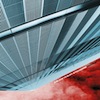 Sometimes, an artist sticks to a style even though they have done it to death but lack the vision to move on from the one idea that they briefly got right. Then there are artists who take this one idea and make it work, over and over again. A Place to Bury Strangers fall firmly into this second camp. They continue to sound as fresh as they did on their debut, which is impressive, considering the musical coffers of My Bloody Valentine and Jesus and Mary Chain should be well and truly bare by now. A Place to Bury Strangers have created a magnificent and charged work that demonstrates they have plenty of fire still to be unleashed.
Sometimes, an artist sticks to a style even though they have done it to death but lack the vision to move on from the one idea that they briefly got right. Then there are artists who take this one idea and make it work, over and over again. A Place to Bury Strangers fall firmly into this second camp. They continue to sound as fresh as they did on their debut, which is impressive, considering the musical coffers of My Bloody Valentine and Jesus and Mary Chain should be well and truly bare by now. A Place to Bury Strangers have created a magnificent and charged work that demonstrates they have plenty of fire still to be unleashed.
With the album's opener, "Alone," the group grabs hold of their distinctive overblown sound—where before it sounded like they could lose control at any moment—and focus it like a laser guided missile. While their ramshackle approach is what drew me initially to them on the first two albums, this tighter style of playing manages to channel all their best bits without losing any of the music’s power; "You Are the One" is the older, cooler brother of "Missing You" from their debut whereas "Mind Control" sees the group consolidate their strategic assault on my ears as they increase the intensity and volume significantly.
However, it is on the album’s title track where they show how much they have developed their sound in the last couple of years. It begins like an outtake from their first album before they completely blow the song open. Melodies, feedback and blissed out vocals all come together to make a perfect whole. It is a potent piece of psychedelic rock that sounds utterly timeless. This feeling permeates through the rest of Worship, particularly on the gorgeous, dream-like "Dissolved," where a gentle guitar refrain becomes buried in the sort of tremolo bar action that would send Kevin Shields into a swoon.
While I liked 2009’s Exploding Head, Worship sounds like the true successor to their first album and their incendiary live shows (my ears are still ringing from the last time I saw them). The more I listen to it, the more I fall in love with its beguiling distorted melodies. (You know a band has got you good when you wish you could jam along with them.) The only thing I feel is missing from this album is a strobe light to go with the sensory overload of the guitars. Other than that, it is impossible to find a flaw in Worship.
samples:
 
Read More
- Creaig Dunton
- Albums and Singles
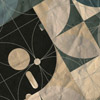
Originally an accompanying piece for the vinyl release of A Static Place, this afterward to that album utilizes the same archaic gramophones paired with computer processing approach, resulting in a similarly dynamic, understated piece of minimalist composition.
The WK in the title refers to Wilhelm Kempff, whose piano based recordings of Beethoven make up the original vinyl source material used to create this work.Opening with ringing, almost painfully shrill sounds, the dynamic nature of the piece become utterly apparent, as the pitch rises and falls, so does the volume, creating a constantly evolving, although distant and cold, piece of music.
The movement is slow throughout Coda's 20 minute duration, emphasizing mostly sustained and stretched out tones, and occasionally a bass-heavy rumble surfaces to act as a counterpoint to the otherwise bright sounds.The latter half especially is bathed in a gauzy, white noise glow that semi-obscures melodies below.Towards its end, the piece seems to take on a darker, bleaker hue before ending on the same type of clean and pure sounds that opened the disc.
While Coda is somewhat slow, its pacing works perfectly for its meditative, carefully unfolding sound.Moments may be somewhat disconnected or bleak, but never off-putting.Regardless of the mood conveyed, Mathieu's work always channels a complex beauty that may not always be delicate, but is always effective and compelling.
Read More
- Administrator
- Albums and Singles
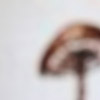 Initially a work inspired by Cage's 100th birthday this year, this album began life as a soundtrack to his One11 film. However as those recordings progressed, Australian composer Lawrence English began to develop a wider body of pieces that were inspired, both directly and indirectly, by the legendary artist, and take on a life of their own.
Initially a work inspired by Cage's 100th birthday this year, this album began life as a soundtrack to his One11 film. However as those recordings progressed, Australian composer Lawrence English began to develop a wider body of pieces that were inspired, both directly and indirectly, by the legendary artist, and take on a life of their own.
Cage’s use of chance, and his interest in Zen Buddhism are among the more often occurring themes and influences on these eight pieces, which are deliberate and meditative, but retain a loose, improvisational feeling at times.The ghostly wisps and sustained lower-frequency moments of "Otidea Onotica" possess a certain peaceful quality, though that is contrasted by the quickly rising and falling tonal outbursts around them.
"Gymnosporangium" and "Amanita Inaurata" also have this apparition-like sparseness, with the former especially employing the varying tones and pitches of "Otidea Onotica"."Hygrophorous Russula" takes a different path, sounding like a slow-motion fall accompanied with higher register textural passages.
The back to back pieces "Naematoloma Sublateritium" and "Coprinus Comatus" make for an especially overt contrast, with the former relying on almost foghorn like dark sounds that go to a distinctly creepy, dark place, while the latter has a warmer, inviting character to it, even if they follow similar structures compositionally.
Closer "Entoloma Aborivum" stands out as perhaps the most drastically different piece on this album, given its harsher, more commanding tone.Even though it moves at a glacial pace, the heavily reverberated textures, at times resembling elongated guitar noise, are harsher and more commanding than what preceded it.The closing moments also have a shrill, feedback like quality that adds a bit of welcome abrasion to an otherwise gentle work.
For/Not For John Cage may show differing levels of inspiration courtesy of the legendary composer, but English's work also stands on its own as the work of a powerful, established artist in his own right.At times ascetically sparse, other times boisterous and dominating, there is a significant amount of variation within these eight pieces, but they all sit nicely beside one another as a coherent work.
samples:
 
Read More
- Administrator
- Albums and Singles
 Locrian has spent the better part of the last four years distinguishing themselves from the also-rans of the post-Sunn O))) drone scene, crafting their own distinct sound and identity amid many less engaging acts. While much of their recent work has been focused on the deconstruction of metal symbolism, paired with a more conventional rock bent, here the trio go back to their dissonant, abstract roots, with help from legendary audio and visual artist Christoph Heemann.
Locrian has spent the better part of the last four years distinguishing themselves from the also-rans of the post-Sunn O))) drone scene, crafting their own distinct sound and identity amid many less engaging acts. While much of their recent work has been focused on the deconstruction of metal symbolism, paired with a more conventional rock bent, here the trio go back to their dissonant, abstract roots, with help from legendary audio and visual artist Christoph Heemann.
On their most recent albums and collaborations, the trio of Terence Hannum, Andre Foisy and Steven Hess demonstrated a distinct turn in shaping the heavily treated synths and rapid guitar work into more traditionally song-like structures, without ever fully embracing conventionality.Here that is not quite as much of a noticeable feature, with the album divided into four 11 to 15 minute tracks that lead to longer, more experimental compositions.
Even the artwork shows some variance from the norm:the band’s penchant for using the signifiers of metal are all but gone, replaced by what more closely resembles a corrupted jpeg file.The sound, however, is clearly the work of Locrian, though the contributions from Heemann expand on their shared themes and approaches to sound.
"Hecatomb" is perhaps the most familiar sounding. The drums are notable but low in the mix, with electronic loops and acoustic guitar strums almost giving a Morricone like soundtrack vibe to the sound.The layers are piled on, each one more complex and intertwined with the one before, all the while generating an almost imperceptible melody hidden in the detritus.Eventually it focuses on the droning guitars and keyboards, feeling more in league with the earlier, more abstract Locrian works.
One characteristic Locrian has never traded in is the intentional, and usually overwrought, "evil" sound that other artists have embraced.Which is, I have always felt, a good idea.It helped them to develop their own identity without letting cliché overshadow content.However, on "Loath the Light," there is a horrifying sensibility via the crashing cymbals and bent synths, magnified by Hannum's tortured, guttural screams.Do not be mistaken: this does not come across as pseudo demonic high school metal bullshit.This is much more in league with Nature Unveiled/Dogs Blood Rising era Current 93, a hallmark of terrifying recordings, and transcends any corniness usually associated with such approaches.
The second half of the album is less visceral and more reflective, such as the layered guitar and propulsive low-end parts of "Edgeless City," which is by no means a lighter piece, but just feels dark, rather than overtly malignant."The Drowned Forest" takes on a more monastic feeling, with chanted vocals starting out as the focus, with a subtle amount of musical accompaniment that eventually peaks into a complicated wall of sound.There is no sense of movement or propulsion to be heard, it instead makes for a slowly decaying piece that just looms imposingly.
It is hard to tell where the separations are between Locrian's and Heemann's contributions, and that is one of the hallmarks of an effective collaboration.Neither artist seems to overshadow the other, but both retain their own identities perfectly, with Heemann's gloriously concrete tones and post-industrial chaos matching with Locrian's metal tinged guitar and electronic layers.Both artists step a bit out of their comfort zones on this album, and the result is a glorious success.
samples:
 
Read More
- Administrator
- Albums and Singles
 My life was never the same after hearing Fushitsusha for the first time. The second live album was a gargantuan asteroid of free rock headed straight for the center of my brain. The group has undergone many line-up changes and periods of inactivity but on this first album in about a decade, and the first since Yasushi Ozawa’s death in 2008, Keiji Haino is rejoined by Ikuro Takahashi on drums (Takahashi having previously filled the drum stool for Fushitsusha as well as other stalwarts of the Japanese psych scene like High Rise, Kousokuya, Aihiyo and LSD March) and by bassist Mitsuru Nasuno (a long-time collaborator with Otomo Yoshihide and former member of Ground Zero).
My life was never the same after hearing Fushitsusha for the first time. The second live album was a gargantuan asteroid of free rock headed straight for the center of my brain. The group has undergone many line-up changes and periods of inactivity but on this first album in about a decade, and the first since Yasushi Ozawa’s death in 2008, Keiji Haino is rejoined by Ikuro Takahashi on drums (Takahashi having previously filled the drum stool for Fushitsusha as well as other stalwarts of the Japanese psych scene like High Rise, Kousokuya, Aihiyo and LSD March) and by bassist Mitsuru Nasuno (a long-time collaborator with Otomo Yoshihide and former member of Ground Zero).
It was Nasuno’s other band with Haino, Seijaku, that led to this new Fushitsusha as Haino felt that the energy and music created on their two 2010 albums was very similar to the elements that made Fushitsusha what it was. Indeed, Seijaku’s Mail from Fushitsusha made the point incredibly clear (especially considering the usual obliqueness of Haino’s titles). Picking up the baton from where Seijaku left off, this sounds less like the Fushitsusha of It Was Eternity That Reached Out First or Origin’s Hesitation than expected; those looking for something like the first two live albums will be scratching their heads (though they can look to Haino’s new group Nazoranai for satisfying that urge).
There is a bright, early rock’n’roll feel to a lot of the rhythms so it is probably no coincidence that Fushitsusha have dropped the black artwork and gone for a cheery blue-green colour scheme on the sleeve. These short songs have something akin to a structure in most of them and a style that has shades of Les Rallizes Dénudés about it. Hikari to Nazukeyo clips along with the trio firing out intense, almost danceable pieces. On the fourth track (no English translations are given for the song titles), Haino comes as close to conventional playing as he has ever come while Takahashi and Nasuno punch out a solid rhythm; it sounds like something that might have been cast away by The Rolling Stones for being a bit too loose.
Although there is no fear of Fushitsusha becoming a pop band, both the opening and fifth piece provide ample opportunities for the group to flex those muscles. The first has a frenetic and uncomfortable rhythm that creates an air of mania whereas the fifth is an intense exploration of guitar feedback and heavy drumming. Towards the end of this latter piece, Haino goes off on an extended guitar solo where he hits every note bar the one I expect. The album finishes with all three musicians unleashing the full fury of their instruments to create a perfect storm of noise. This is music felt in the chest.
While Haino is obviously the most notorious member of the group, especially as later Fushitsusha albums felt more and more like his solo outings with extra musicians, this album demonstrates that the group is more than just a prop for him to show off his guitar playing. This new Fushitsusha play with a unity that makes it very difficult to think of them as anything less than a three-headed organism in its own right. Hopefully they will not call it quits again in the near future!
 
samples:
 
Read More
- Administrator
- Albums and Singles
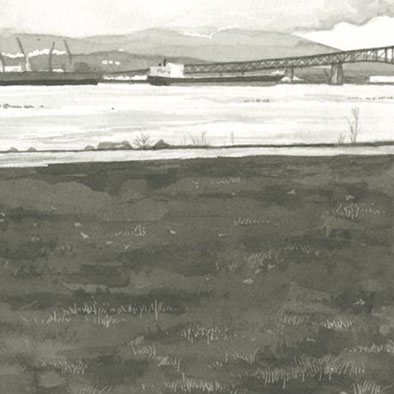 While 2010's excellent Endless Fall was a bit of a curve-ball, Scott Morgan has historically not been a man prone to surprises or grand gestures.  As a result, Sketches from New Brighton sounds almost exactly like I would expect a new Loscil album to sound.  There are certainly some minor evolutions and thematic changes, but Morgan is more or less covering very familiar territory once again (lush, pulsing, aquatic-sounding soundscapes).  Fortunately, I am quite fond of that territory.
While 2010's excellent Endless Fall was a bit of a curve-ball, Scott Morgan has historically not been a man prone to surprises or grand gestures.  As a result, Sketches from New Brighton sounds almost exactly like I would expect a new Loscil album to sound.  There are certainly some minor evolutions and thematic changes, but Morgan is more or less covering very familiar territory once again (lush, pulsing, aquatic-sounding soundscapes).  Fortunately, I am quite fond of that territory.
As alluded to by its title, Sketches from New Brighton falls within Loscil's series of works inspired by specific places.  The place in this instance is an ocean-side park in Vancouver bordered by factories.  It is easy to see how the collision of seemingly infinite natural majesty and dreary dystopian industrial sprawl could be inspiring, but it is hard to tell how much of New Brighton's character is actually reflected in the music because changes in Loscil's sound tend to be so subtle.  That said, Morgan's pace and textural leanings seem very much akin to drifting smoke and gently washing waves, as Sketches is essentially a series of languorous, artfully blurred swells unfolded with hypnotic repetition. Despite that, the nine pieces here have a structure and an approach that sets them a bit apart from most ambient music–they sound a lot more like '90 Mille Plateaux-style dub techno and Oval-style skipping CD loops liquified and purged of all beats and harshness.
Kranky's description of this album uses the amusing phrase "aural Feng Shui" to describe Morgan's aesthetic and it is difficult to think of a better way to describe what he has accomplished.  There are not any real hooks to speak of, nor are there any infectious rhythms or overt distinctions between the various pieces, but the album is nevertheless a very immersive, deliberate, and evocative whole without a misstep or wasted note.Although Scott has unarguably chosen very narrow stylistic terrain to work within, his minimalism affords him the ability to focus his near-obsessive attention upon every single aspect of his work.  As a result, Sketches from New Brighton is an absolutely beautiful piece of craftsmanship, production. and composition: deep sub bass, fragilely shimmering and quivering synths, quietly insistent pulses, subtly melancholy melodic coloration, spaciousness, small-scale vibrancy and unpredictability, etc.  Morgan does not miss a single detail.
It is pretty hard to rank Sketches from New Brighton within the Loscil oeuvre, as some of Morgan's other efforts offer a lot more in the way of instant appeal (grooves, broader textures, stronger melodies).This is easily as satisfying as anything else that Scott has done, however. He may have become narrower and more subtle, but he has also gone deeper.  As a result, Sketches is something of a step forward artistically, but a step backwards in accessibility and immediacy.  That is fine by me (this is not pop music, after all)–it just means that I will only reach for this album when I am in the mood for more focused and active listening.  Sketches from New Brighton is unquestionably yet another fine album from Scott, but it takes a bit more attention and effort to fully appreciate than usual.
Read More
- Administrator
- Albums and Singles
Industrial Records is proud to announce the much anticipated TWO album release:
DESERTSHORE / THE FINAL REPORT, a unique collaboration by Chris Carter, Peter 'Sleazy' Christopherson and Cosey Fanni Tutti. This is a two album release celebrating both the progress inherent in change and the fulfillment of two exceptional, yet separate projects. Available from 26th November 2012

‘Desertshore’
The ‘Desertshore’ project is a 're-imagined' cover version of Nico’s seminal 1970 album first conceived by the late Peter 'Sleazy' Christopherson in Berlin 2006. In 2010 at his home in Bangkok, he refocussed his approach readying to record guest vocalists while Chris and Cosey prepared material in their UK studio for his return there in December. Sadly, Sleazy unexpectedly died in his sleep on the 25th November in Bangkok.
Chris and Cosey made a commitment to Sleazy to complete the ‘Desertshore’ project picking up from where they left off just prior to his untimely passing. With enthusiastic support and contributions from so many who were close to Sleazy, especially the guest artistes whose work he admired; Antony, Marc Almond, Blixa Bargeld, Sasha Grey and Gaspar Noé, the project is now complete.
"a quite remarkable set of songs, a repurposing of Nico's maudlin, scraping sorrow into the deep mindmassaging
electronics that characterised later live work by Throbbing Gristle, X-TG and Carter Tutti,arguably even Coil's
Ape Of Naples."
Luke Turner for The Quietus as part of a review of a live remix preview performance of 'Desertshore' at AV Festival 2012.
‘The Final Report’
Throughout their 36 year friendship Chris Carter, Peter 'Sleazy' Christopherson and Cosey Fanni Tutti produced many pioneering and acclaimed collaborative works together.
These trio sessions were without exception always very productive; ideas that produced many hours of recordings, sound experiments, research in new performance possibilities, visuals, the ongoing design and building of new and innovative instruments; a constant restless exploration of new paths together.
‘The Final Report’ album has been completed from their final 2009/2010 sessions together at Chris and Cosey's studio in Norfolk. This album stands as the final report; a celebration, a loving remembrance of their unique partnership.
Industrial Records Ltd are proud to release these TWO extraordinary recordings.

'DESERTSHORE'
Janitor Of Lunacy - Vocals by Antony
Abschied - Vocals by Blixa Bargeld
Afraid - Vocals by Sasha Grey
The Falconer - Vocals by Marc Almond
All That Is My Own - Vocals by Cosey Fanni Tutti
Mutterlein - Vocals by Blixa Bargeld
Le Petit Chevalier - Vocals by Gaspar Noé
My Only Child - Vocals by Cosey Fanni Tutti
Desertshores - Various
‘THE FINAL REPORT’
Stasis
E.H.S.
Breach
Um Dum Dom
Trope
What He Said
In Accord
Gordian Knot
Emerge To Space Jazz
The End
Double Vinyl - Gatefold cover with 12" booklet.
Double CD - in bespoke CD packaging, 12 page booklet, postcard & bonus track.
Digital Download - with pdf booklet and bonus track. - aac, mp3, flac etc.
The album will be available worldwide from all the usual online & physical retail outlets,
including the Industrial Records web store.
More details to follow...
Read More
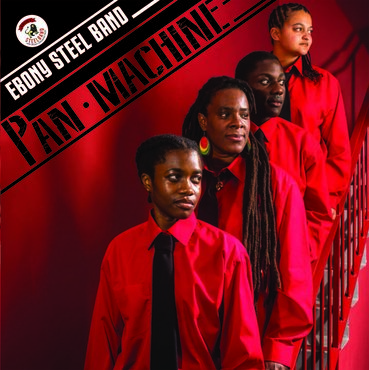 Ebony Steel Band are a primarily eleven-person group of Trindadian and Caribbean musicians most well-known for paying tribute to other bands. Not to pay disservice to their original works, as they have produced Steel Away! (1976), Best of Steeldrums (1990), and Carnival (1998), but still, no one can deny their ability to breathe new life into classic songs. After their tribute to The Beatles with 2010's Popular Beatles Songs - Caribbean SteelDrums, director Ian Shirley challenged EBS to cover Kraftwerk, one of the most classic and enduring pioneers of electronic music in history. Their effort was a complete success.
Ebony Steel Band are a primarily eleven-person group of Trindadian and Caribbean musicians most well-known for paying tribute to other bands. Not to pay disservice to their original works, as they have produced Steel Away! (1976), Best of Steeldrums (1990), and Carnival (1998), but still, no one can deny their ability to breathe new life into classic songs. After their tribute to The Beatles with 2010's Popular Beatles Songs - Caribbean SteelDrums, director Ian Shirley challenged EBS to cover Kraftwerk, one of the most classic and enduring pioneers of electronic music in history. Their effort was a complete success.
- Administrator
- Albums and Singles
LINKS:
More information on Christoph Heemaan: http://brainwashed.com/common/htdocs/biog/heemannc.php?site=mimir
Read More


